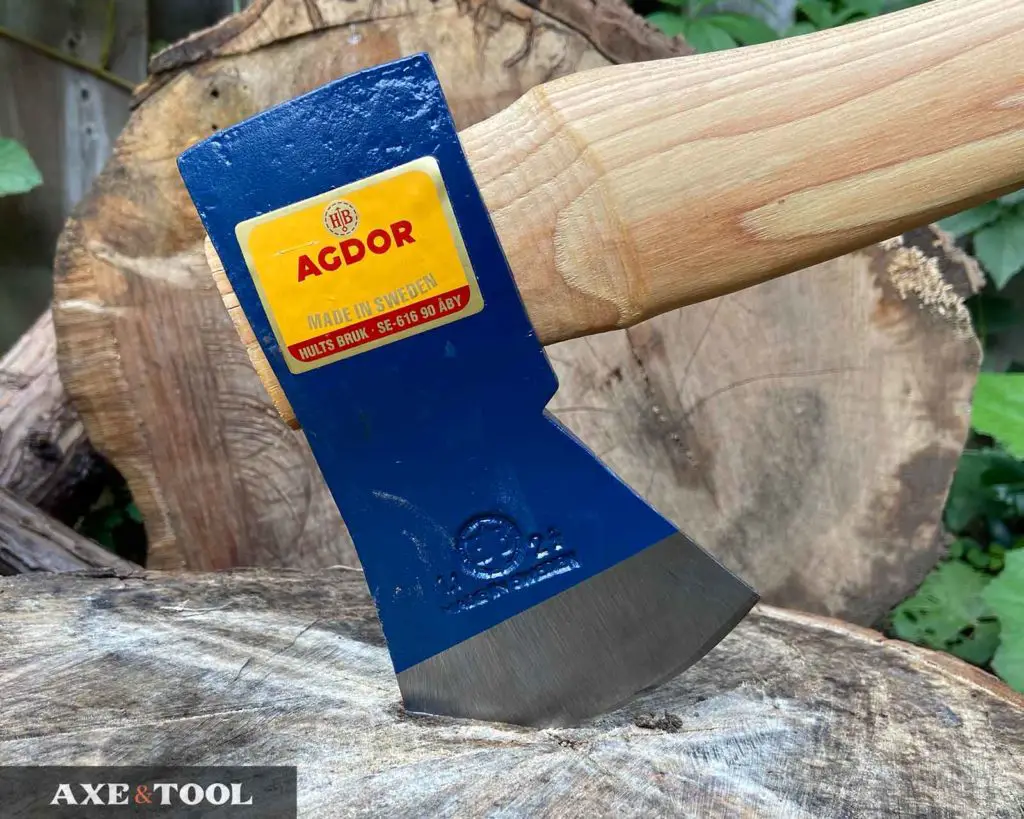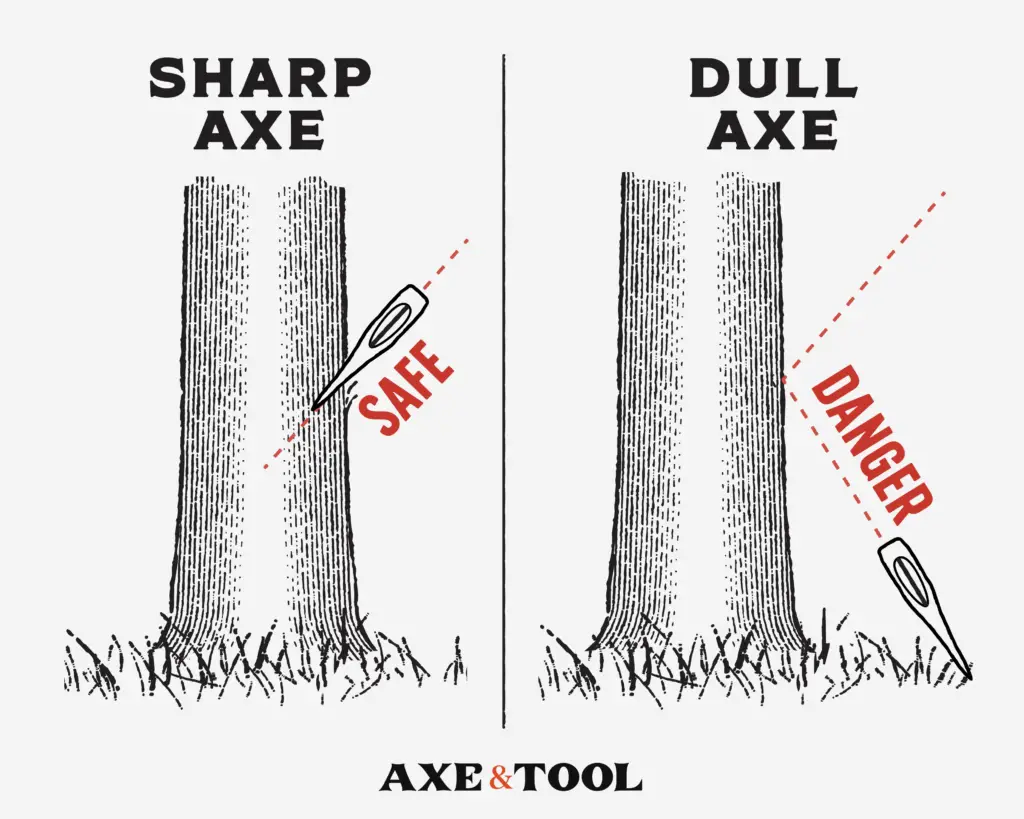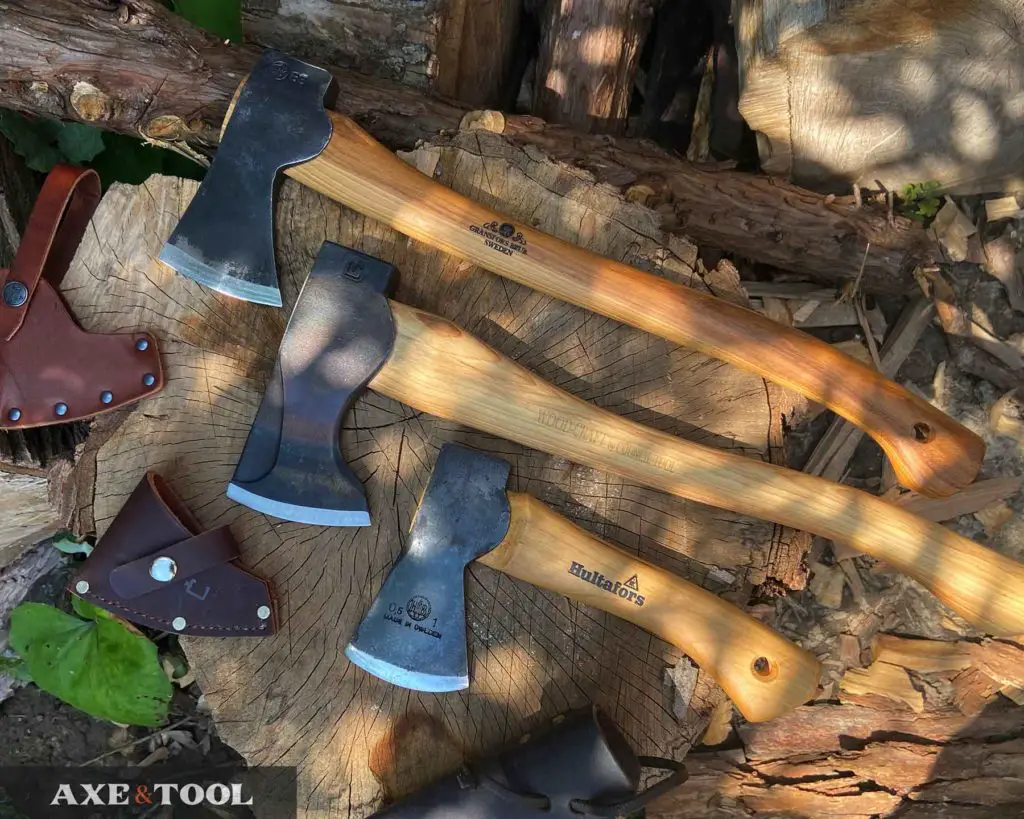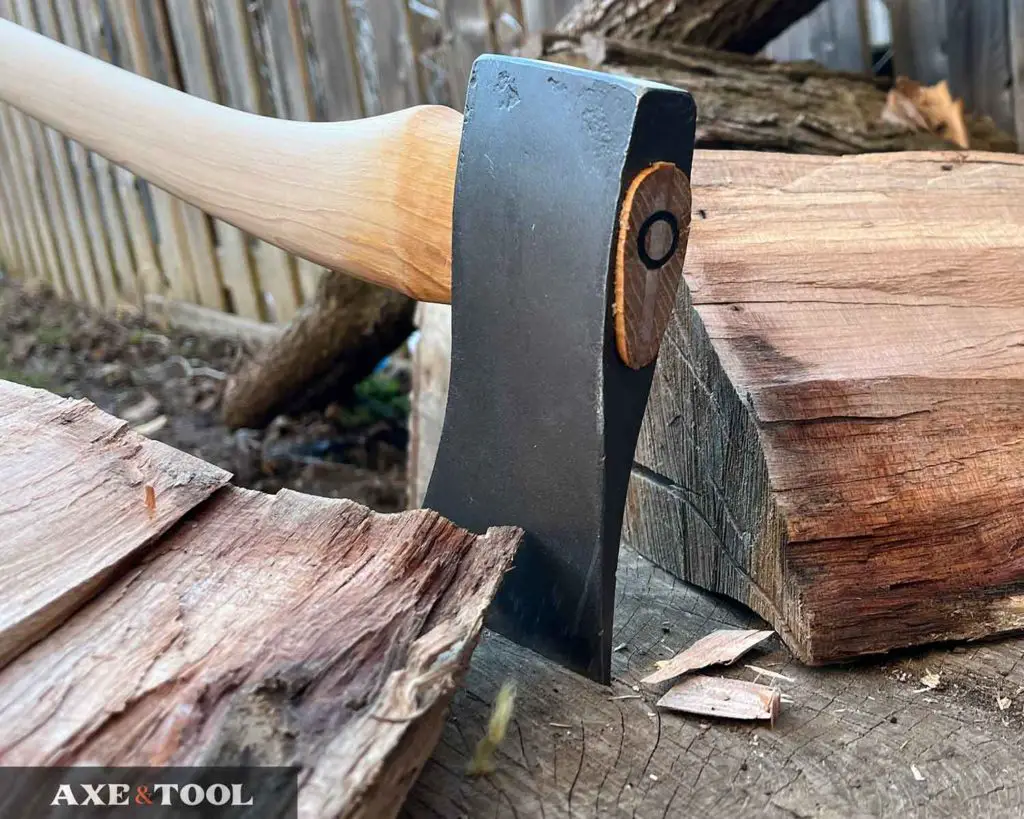Dangers of Axes and Hatchets: Risks Explained

Axes and hatchets are a heavy 3-5″ blade being swung around on the end of a stick – so that can create a certain amount of nervousness. But are they really dangerous?
Axes are easy to use safely if you understand the risks, but they can be dangerous. They can cause serious injury if used incorrectly or carelessly. The sharpness, length of the axe, and the work being done can all impact the risk.
This article will help you understand where the risks come from, so can avoid them.
1. A dull axe can be more dangerous than a sharp one
While this might seem counterintuitive, a sharp axe is considered safer than a dull one. A sharp axe will safely dig into the wood much easier and lower the chance that it will ricochet somewhere unexpected.

A dull axe is much more likely to skip off a knot, or just bounce off because of poor technique – and then for a brief (but scary) moment, it will be out of control. And it can come back and hit you, or just go somewhere unintended.
This is always a risk, but I have some tips further down about proper techniques to keep you safe.
2. Axes can be dangerous even when not in use
Now obviously a sharp axe… is sharp. So be smart about it.
- Keep a sheath on your axe for transporting it, and whenever it’s not in use.
- Hold an axe near the head whenever you are carrying the axe or when it’s not in use. That way you are always in complete control of the edge.
- If you put your axe down, make sure it’s facing a safe direction – like towards a wall or log. It’s better to lean it up so it’s visible, and not lay it on the ground. Better yet, plant it in a log rather than just putting it down.
I have a scar on my leg because my dog ran into me while I was walking from my vehicle with the axe unsheathed dangling in my hand. It was a dumb careless mistake – and that’s how most accidents happen.
3. The length of the axe can make it more (or less) dangerous
The size of the axe will impact how much of your body could potentially come into contact with the blade if used incorrectly.
Large full-size axes are the safest
It’s hard to hit yourself with a full-size 36″ axe.
These big axes are only used with two-handed swings, most likely to split wood. So no matter how bad your technique, (unless you are over 7′ tall) the handle length will make it near impossible for the blade to swing back and hit you.
If you miss or bounce the axe off a log it should only end up in the dirt.
Just make sure the area around you is clear because these large axes need the most clearance for swinging.
Dangers of using an axe that’s too big:
Full-size axes typically have heads weighing from 3-5lbs, but some of the larger mauls can go as high as 8lbs. If you don’t have the strength to be swinging a large heavy axe, you can pull a muscle or injure your back.
In general, you should be able to lift your axe extended away from you one-handed. If you can’t do that, it’s probably too heavy.
A full-size axe is not going to be the right tool for every job – even though it’s safest.
Midsize axes are versatile but have more risk
The 28″ boys axe is a very common size and popular as a general work axe. The head is usually 2-3lbs, making it small enough to be portable, with the ability to fell roughly 12″ trees or split 12″ logs.
These axes are handy and many people’s “go-to” size. But the shorter handle means the blade can swing around and make contact with your feet or shins. I’m 6’1 and when I drop an axe this size down at arm’s length the blade is perfectly aligned with my shin.
The shorter the axe handle, the more of your body is within reach of the blade – adding risk from poor technique.
These axes can cause serious injury because you are using them with two hands. So the more powerful swings and heavier heads can cause more damage if used wrong.
Small axes and hatchets are the most likely to cause injury

I love compact axes – but since they can be used one or two-handed, they pose more risk for injury.
Hatchets and small axes are considered the “most dangerous”. Not because the injuries are the worst – but because it’s possible to hit more of yourself and in more ways.
Hatchets (12-17″) and small axes (18-24″) typically have a 1-2lb head, making them much more versatile and nimble than a boy’s axe. They can be often be used one or two-handed and are popular with campers and bush-crafters.
A small axe or hatchet held in two hands has the potential to hit around your knees if used improperly. And your whole leg from that point down can be put at risk depending on your form, even if you are crouching or bending over.
One-handed use can pose the same risks to the legs, but can also expose your off-hand if you do something foolish like holding the log you are chopping (don’t do that).
3. The risks of common axe tasks
Basically, all the dangers of using an axe can all be traced back to the same question. Where could the blade end up?
So no matter how you are using an axe, think about where the blade can go if your swing is successful – but also where it can go if something goes wrong.
Most accidents happen from someone being careless or lazy. Including people who know better (like me). It can be easy to think “just this once” and make a careless swing, or do something risky – that’s all it takes.
Dangers of splitting wood with an axe

The risks of splitting are pretty simple, but they can still catch up with you if you get careless or lazy.
If you successfully split the log, your axe will go through it (duh). But, if you are swinging with poor form (in an arch), your axe will swing back towards your feet after splitting the log – that’s bad.
Tips for splitting wood safely:
- Bend your knees, so you are dropping the axe down and not swinging in an arch. That way your axe can never come back to connect with your feet or shins.
- Stand with feet apart – so if the axe does come back towards you it will go between your feet.
- Kneel down if you are using a small axe or hatchet so that your axe will only hit the ground before it can hit you.
- Place your piece of wood near the back of a chopping block, so your axe will always plant firmly in the block after splitting the wood.
- Never, hold the wood you are splitting – even if it’s just kindling. Use a stick to hold the wood in place if needed – or check out my method for easy kindling on a campsite.
Dangers bucking and chopping
The main danger from bucking or chopping is from your axe ricocheting. But if the wood is on or near the ground, you can have the same risk of the axe coming back towards your feet.
Chopping swings are always made at an angle with the wood, so your axe can bounce off unpredictably if it’s dull, or hits a hard knot.

Tips for chopping wood safely:
- Chop at a 45-degree angle for the best chance of penetration
- Stand behind the log you are chopping, so that ricochets can’t get to you.
- Wear protective gear – steel-toed boots, or even chainmail shin guards. And point your toes towards the axe so they actually catch and stop the axe (rather than hitting the side of your boot).
- Keep your feet together so the axe will deflect to either side of you (if it does go through)
- Cut flat-foot holds if you do have to stand on the log. Keep your balance.
Dangers when limbing with an axe
Typically when limbing, your axe will end up somewhere in the air after passing through the branch. So make sure you do not occupy any of that air.
And don’t chop a limb that you are under.
Dangers when carving with an axe
You can find a hatchet useful for carving if you are camping or doing bushcraft. But that typically puts your off-hand very close to the blade. I am not an expert carver (at all), but I have done it enough to know what’s dumb:
- Hold above where you are chopping, and chop down
- Work in contact with your chopping block so your axe always ends up somewhere safe
Please comment below If I missed something or if you have any questions. I do my best to respond to everyone.
About the author:
About the author:
Jim Bell | Site Creator
I’m just a guy who likes axes. I got tired of only finding crap websites, so I set out to build a better one myself.
I’m also on Instagram: @axeandtool
Resources:
US Department of Agriculture, Forest Services – Forest Service Ax Manual


